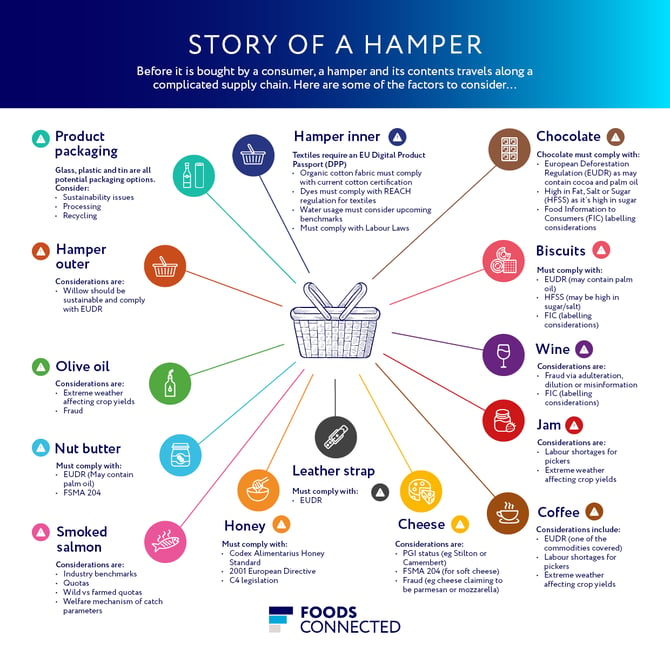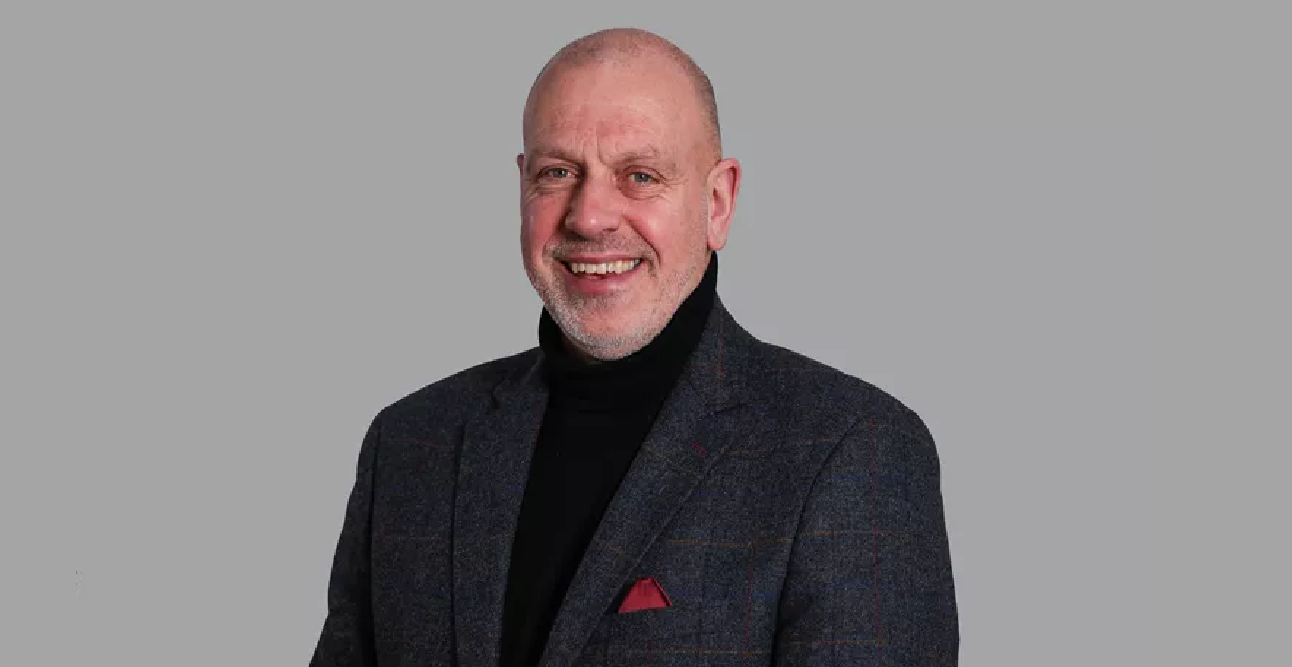A new set of upcoming legislations are redefining the traceability landscape. To understand the impact they will have on the manufacture, supply and sale of everyday food products, we took a popular item and assessed how it would be affected by the upcoming regulations in our infographic.
With the EU Deforestation Regulation(EUDR) due to be rolled out at the end of this year and FSMA 204 just over a year later in the US, the entire food industry is having to reconsider its relationship with traceability. How and which products businesses choose to move across the globe is about to change.
To show the impact of these new regulations, we wanted to track the traceability journey of a popular store item - a food hamper. Especially popular at seasonal periods, the collection of products inside should highlight the complexity of the traceability journey and why businesses need to be preparing for the changes now.
When we assessed each item we considered:
- How it was sourced
- The marketplace in which it would be sold
- And the compliancy issues it will encounter due to the regional legislations and regulations in which it is either produced or retailed.

💡Right click and open image in new tab to zoom and save the infographic
What the exercise reinforced was just how many considerations needed to be factored into the traceability journey of a reasonably common - and popular - item. Everything from the external packaging to the inner lining has to be tracked.
Regulations such as digital product passports, which might not be automatically considered in the food space, come into play, as does the REACH regulation for textiles, water usage and current labour laws.
Sweet treats such as chocolate and biscuits are hamper regulars and run the gauntlet when it comes to food industry legislation. In Europe they must comply with EUDR if they contain cocoa and palm oil, UK high fat, sugar and salt legislations depending on the sugar content, and Regulation (EU) No 1169/2011 (FIC Regulation) to ensure that both nutritional and allergen information is clear and present.
Other popular additions are cheese, honey and wine (or champagne), especially if the hamper is designed for a celebratory occasion. These sectors are particularly susceptible to fraud, either through adulteration, dilution or misinformation. There is new AI being developed to battle the problem, but labelling regulations like FIC are vital and must be complied with.
Extreme weather and the affects it can have on crop yields can also affect availability and pricing when it comes to preserves, coffee and olive oil. While welfare and quotas are both considerations for any fish products that make it into the basket.
With the supply chain of so many different products requiring scrutiny, food businesses need to be assessing their traceability processes now.
We dig deeper into how the upcoming regulations are shaping the food industry's traceability journey in our new report on the subject. Download your copy to get all the insights.
.jpg)
Greer McNally
Greer has over 15 years’ experience writing about trends in the food and retail sectors. She lives in a little village by the sea in Northern Ireland and loves creating content that informs how people think about the food industry. A recent career highlight was interviewing the legend that is Dr Temple Grandin.
Stay up to date
Stay up to date
Browse Posts
- December 2025
- November 2025
- October 2025
- September 2025
- August 2025
- July 2025
- June 2025
- May 2025
- April 2025
- March 2025
- February 2025
- January 2025
- December 2024
- November 2024
- October 2024
- September 2024
- August 2024
- July 2024
- June 2024
- May 2024
- April 2024
- March 2024
- February 2024
- January 2024
- December 2023
- November 2023
- October 2023
- September 2023
- August 2023
- July 2023
- June 2023
- May 2023
- April 2023
- March 2023
- December 2022
- November 2022
- October 2022
- September 2022
- August 2022
- July 2022
- June 2022
- May 2022
- April 2022
- March 2022
- February 2022
- January 2022
- December 2021
- November 2021
- October 2021
- August 2021
![[Infographic] Story of a hamper: understanding the traceability journey](https://blog.foodsconnected.com/hubfs/Blog%20Imagery%20(PI%20AUTOMATED)/Blog%20Headers/Story%20of%20a%20hamper%20understanding%20the%20traceability%20journey.jpg)

/Blog%20Headers/shutterstock_1927957907%20(1).jpg)
/Blog%20Headers/shutterstock_1845178195%20(2).jpg)
/Blog%20Headers/shutterstock_2133827717%20(1).jpg)
/Blog%20Headers/shutterstock_2473376713.jpg)
/Blog%20Headers/shutterstock_2247276303.jpg)
.png)
.png)




/Blog%20Headers/shutterstock_1834054435.jpg)

/Blog%20Headers/Preparing%20for%20the%20EU%20Deforestation%20Regulation%20(EUDR)everything%20you%20need%20to%20knowjpg.jpg)
.png)
.png)
.png)

/Blog%20Headers/shutterstock_2498984931.jpg)
/Blog%20Headers/Year%20in%20Review_2024.png)